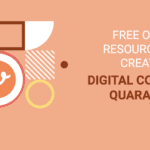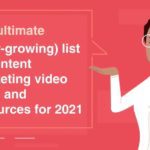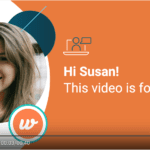Welcome to the ultimate challenge for marketing and sales professionals in the software space. You know your product is a game-changer, a productivity powerhouse, a workflow revolution. But to your customers, especially the non-technical decision-makers, it’s often just an abstract concept, a collection of features on a pricing page. How do you bridge that gap? How do you make sophisticated software feel as tangible and real as a physical product? Many software industry companies grapple with this, often falling back on dense technical specs and feature lists that fail to connect.
This article is your guide to breaking that cycle. We’ll explore creative, human-centered strategies to transform your intangible solution into a vivid, relatable, and indispensable tool in your customer’s mind. It’s time to move beyond the ‘what’ and powerfully demonstrate the ‘wow’ by focusing on experiences, outcomes, and stories that bring your solution to life.
1. Craft Relatable Analogies and Metaphors
The human brain is wired to understand new concepts by comparing them to familiar ones. Instead of describing your software’s features in technical terms, use analogies that connect to everyday experiences.
- Is your project management tool “a digital Swiss Army knife for teams”?
- Is your cybersecurity software “a digital bodyguard for your company’s data”?
- Is your CRM “the central nervous system for your sales operations”?
These metaphors instantly make abstract functions feel more concrete and understandable. For instance, a software company selling a complex data integration platform might say, “Our software acts like a universal translator for all your different apps, allowing them to speak the same language seamlessly.” This is far more powerful than listing compatible APIs.
2. Visualize the “Before and After”
One of the most effective ways to demonstrate value is to show a clear contrast between life with and without your software. This isn’t just about listing benefits; it’s about visualizing the transformation.
Create simple graphics, short animations, or even a split-screen video that shows:
- Before: A chaotic workflow with scattered documents, missed deadlines, and manual data entry.
- After: A streamlined dashboard, automated reports, and a collaborative, stress-free environment.
This approach makes the pain points feel real and the solution incredibly desirable. For example, a financial planning app could show a messy pile of receipts and spreadsheets on one side, and a clean, automated dashboard with clear savings goals on the other. The value becomes instantly obvious without a single line of technical jargon.
3. Turn Customer Success into Visual Narratives
A list of client logos is good, but a story is unforgettable. Don’t just say a customer achieved “a 50% increase in productivity.” Show it. Turn your best case studies into compelling visual narratives.
Work with a customer to create a short story that outlines:
- The Character: Introduce the customer and their role (e.g., “Meet Sarah, a marketing manager drowning in spreadsheets.”).
- The Conflict: Detail the specific challenge they faced (“She spent 10 hours a week manually compiling campaign data.”).
- The Discovery: Show how they found your software.
- The Resolution: Visualize their success (“Now, with our automated dashboard, Sarah gets the same report in 10 minutes and uses her time for strategy.”).
This human-centered approach transforms a dry statistic into a relatable journey, allowing potential customers to see themselves in the story.
4. Leverage the Power of Video
Video is arguably the most powerful tool for making software tangible. It humanizes your product by showing it in action within real-life scenarios, moving beyond static screenshots. Instead of just explaining how to produce videos, let’s focus on the types of video content that work best:
- Explainer Videos: Use simple animations to break down what your software does, for whom, and why it matters. Focus on the problem-solution narrative.
- Animated Use Cases: Show your software solving a specific problem for a specific user persona. This helps different segments of your audience see the direct relevance to their roles.
- Customer Onboarding Sequences: Short, guided video tutorials not only help new users but also serve as excellent marketing material, demonstrating the software’s ease of use and thoughtful design.
- “Day in the Life” Videos: Show a professional using your software as a natural part of their workday. This contextualizes its value and makes it feel like an indispensable tool rather than just another program to learn.
5. Offer Interactive Demos and Walkthroughs
Reading about features is passive. Experiencing them is active. Interactive demos empower potential customers to “touch” and “feel” your software without needing to sign up for a full trial.
These are not just pre-recorded videos; they are guided, clickable simulations of your product. A user can click through a key workflow, experience the user interface, and see the results firsthand. This hands-on approach removes uncertainty and builds confidence. For example, a prospect can simulate creating a report or setting up a project in your tool, giving them a tangible sense of its power and usability before they ever commit.
This strategy is especially effective for software industry companies with complex products, as it breaks down sophisticated processes into manageable, easy-to-grasp steps.
From Features to Feelings: Your Next Move
The most successful software industry companies understand that customers don’t buy software; they buy better outcomes. They invest in solutions that promise efficiency, growth, and an end to their biggest headaches. Your marketing and sales efforts must pivot from a technical monologue to a human-centered dialogue.
Instead of leading with a feature list, lead with a story. Instead of talking about code, talk about confidence. By using analogies, visualizing transformations, and showing your product in action, you make your solution feel real, relatable, and indispensable.
Your immediate priority should be to evaluate your current marketing assets. Where are you relying too heavily on technical specs? Where can you inject a story, a visual, or an interactive experience? Shift your focus from what your software is to the better reality it creates. When you successfully make the intangible tangible, you don’t just win a sale, you build a loyal advocate for your brand.
Ready to transform your abstract software features into compelling, tangible video stories that drive sales? Many marketing and sales teams want to create more video but lack the time or resources. That’s where automation can help. Explore how Wideo’s video automation solutions for software companies can help you create professional, customized video content at scale and bring your product’s value to life.





